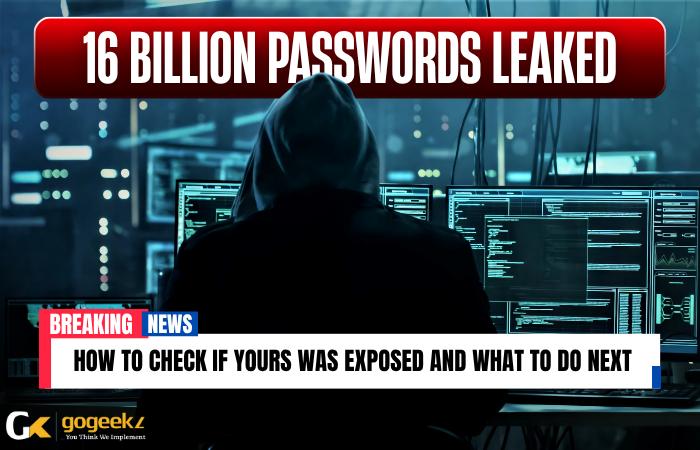Introduction
Hackers Target Over 70 Microsoft Exchange Servers Using Keyloggers to Steal Credentials – How to Protect Your Business Now
Cybersecurity analysts have confirmed that attackers exploited over 70 Microsoft Exchange servers using web shell scripts and keyloggers to steal login credentials, gain persistent access, and monitor internal networks. The goal: extract usernames, passwords, and sensitive corporate data — undetected.
This campaign, uncovered in 2024, is part of a growing trend where attackers exploit vulnerable on-premises Exchange servers using post-exploitation techniques. In this case, they deployed low-level keyloggers disguised within legitimate IIS modules to log every keystroke users entered when logging into Outlook Web Access (OWA).
Let’s break it down — and more importantly, help you secure your systems before your business becomes a target.

What Happened: Keylogger Attack on Microsoft Exchange Servers
Security researchers recently reported that at least 70 organizations running on-premises Microsoft Exchange were compromised. These attacks weren’t flashy ransomware outbreaks — they were stealthy, persistent, and devastating.
How It Worked:
Attackers gained access to vulnerable Exchange servers (commonly via previously known flaws or unpatched systems).They planted malicious IIS web modules directly into the servers’ operating environment. These modules acted as keyloggers, silently recording credentials as users typed them into their OWA login pages. Data exfiltration was subtle — logs were collected and sent back to attacker-controlled domains without raising immediate alarms. Yes — even if you had MFA enabled elsewhere, credentials stolen at the source can be reused internally or for privilege escalation.
Why This Is So Dangerous
Unlike ransomware, which immediately signals an infection, keyloggers are designed to go unnoticed. The longer they stay hidden, the more data they collect — including:
- Domain admin credentials
- Email inbox contents
- Authentication cookies
- VPN or remote desktop credentials
- Confidential internal communications
This is supply chain-level access. In the wrong hands, it can lead to further lateral movement, cloud account compromise, or full-on domain control.
And here’s the worst part: even well-configured servers are vulnerable if not updated and monitored continuously.
Who’s at Risk?
These attacks primarily target:
- On-premises Microsoft Exchange servers
- Organizations that haven’t applied recent security updates
- Servers with exposed Outlook Web Access (OWA)
- Businesses that rely on legacy configurations or third-party tools
Industries affected include:
- Finance
- Law firms
- Government contractors
- Healthcare
- Education
- Small to mid-sized businesses (SMBs) with limited IT security oversight
Think you’re too small to be targeted? That’s exactly what makes SMBs attractive to attackers.

How to Know If Your Exchange Server Was Compromised
If your organization uses Exchange and provides Outlook Web Access to employees, here’s how to start investigating:
1.Check IIS Modules
Inspect web.config files for suspicious add module entries.
Look for unknown DLLs in the \Exchange Server\V15\FrontEnd\HttpProxy\owa\ directory.
2.Monitor Outbound Traffic
Review logs for unusual outbound connections — especially to uncommon domains or IPs.
3.Analyze Login Patterns
Unusual OWA login attempts at odd hours or from international IPs can indicate stolen credentials in use.
4.Use Threat Detection Tools
Deploy tools like Microsoft Defender for Endpoint or CrowdStrike to scan for post-exploitation indicators.
If you’re unsure how to perform these steps, consult a managed IT security provider (like GoGeekz 👇) for immediate assistance.
What To Do Right Now (Response Plan)
If you run on-premise Exchange servers or suspect compromise, here are your critical next steps:
1.Patch Immediately
Install the latest Microsoft Exchange cumulative and security updates.
2.Remove Malicious Modules
Manually remove any unauthorized IIS modules from your server configuration.
3.Force Password Resets
Especially for high-privilege users (admins, executives, and IT staff).
4.Enable Logging and Alerts
If not already active, enable full HTTP logs and PowerShell transcript logging.
5.Audit Exchange for Persistence
Attackers often install additional backdoors — review startup items, scheduled tasks, and any custom scripts.

Long-Term Prevention Strategy
Keeping hackers out isn’t just about patching once — it requires a cybersecurity-first mindset:
- Move to cloud-hosted Exchange or Microsoft 365 if feasible
- Enforce multi-factor authentication (MFA) for all access
- Segment your network so Exchange doesn’t sit in the same zone as sensitive assets
- Use a Web Application Firewall (WAF) to monitor web-based logins
- Apply endpoint detection & response (EDR) to all servers and workstations
- Regularly review and test backup and recovery plans
- Train employees on phishing awareness to prevent lateral entry points
And most importantly: Monitor continuously. Attacks don’t happen on a schedule — your defense shouldn’t either.
Read More : 16 Billion Passwords Leaked- Check If You’re Affected
Key Stats to Know
In 2024, over 35,000 on-premise Exchange servers remained exposed without patching after known vulnerabilities were disclosed. The average time to detect a breach is still over 200 days (IBM Cost of a Data Breach Report). 90%+ of breaches involve stolen credentials, many of which are harvested using keyloggers.
What Makes This Attack Unique?
Unlike email phishing or ransomware, this keylogger-based intrusion is:
- Stealthy – no antivirus alert, no obvious activity
- Persistent – it survives reboots and updates unless explicitly removed
- Credential-focused – targets usernames and passwords rather than files
- Hard to detect without manual inspection or advanced monitoring
How GoGeekz Can Help Protect You
If you’re not sure whether your Exchange server is secure — or if you want to move away from on-premise and reduce your risk footprint — we’re here to help.
At GoGeekz, we specialize in:
- Exchange Server Hardening & Patch Management
- Cloud Migrations to Microsoft 365
- Keylogger & Threat Detection Audits
- Managed Security Monitoring
- Disaster Recovery Planning
- Credential Rotation & Secure Access Policies
Your email server is the front door to your business. Let’s make sure it’s locked tight.
Don’t Wait for a Breach to Take Action
Even if you’ve patched your systems, attackers are constantly innovating. The only defense is to stay one step ahead — and that starts with visibility, readiness, and expert support.
Book a Free Email Server Security Audit with our team at GoGeekz today.
Let’s assess your exposure, close any gaps, and design a proactive defense plan tailored to your business.
Click here to schedule your audit now
Final Takeaway
This isn’t just a Microsoft problem — it’s a visibility problem. If you’re not actively looking for signs of compromise, you might already be infected.
Let GoGeekz help you build a modern, secure, and resilient IT infrastructure that protects your people, your data, and your peace of mind.
FAQs
Industry Experiences
Innovative services for your business
We’re dedicated to making your businesses reliable, efficient, and safe.
We’re a one-stop solution for everything IT you need. Whatever you need, we got you covered:
Hackers compromised over 70 on-premises Exchange servers by planting malicious IIS modules that acted as keyloggers. These modules recorded login credentials typed into Outlook Web Access (OWA) portals and sent them to attacker-controlled domains.
Look for unknown IIS modules in your server config, investigate outbound traffic logs, monitor failed login attempts, and use endpoint detection tools to search for suspicious behavior.
MFA adds a layer of protection, but it won’t stop keyloggers from capturing login credentials. If attackers gain access before MFA is enforced or use credentials internally, they can still do damage.
Yes. Cloud-hosted Exchange offers better built-in security, automatic patching, and less exposure to exploits targeting legacy systems — making it a more secure and scalable option for most businesses.
GoGeekz provides Exchange security audits, patching, cloud migration to Microsoft 365, keylogger detection, and ongoing threat monitoring to keep your email infrastructure secure.





